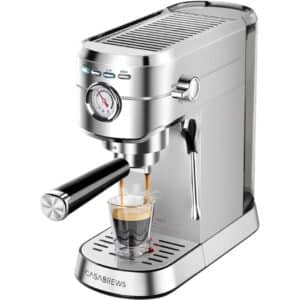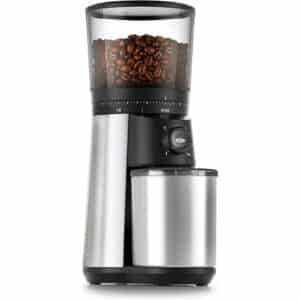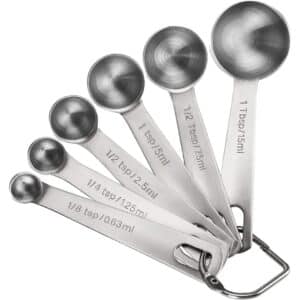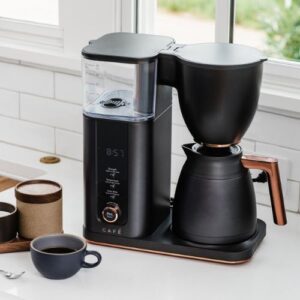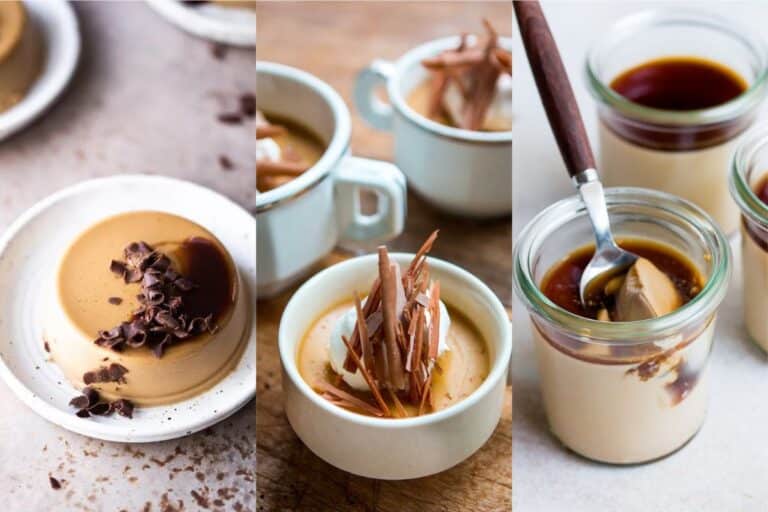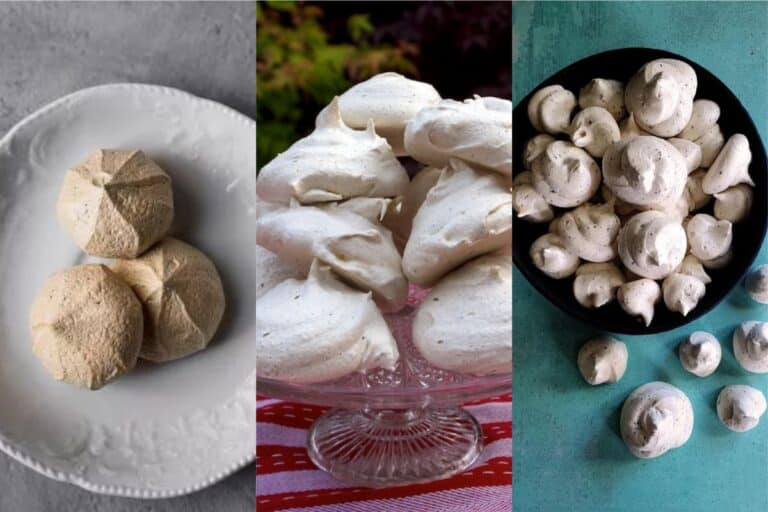Making a cappuccino at home is not just about brewing a cup of coffee; it’s about embracing the art and joy of coffee making. A cappuccino, with its rich espresso base, perfectly steamed milk, and creamy, frothy top, is a testament to the beauty of Italian coffee culture. Mastering the technique of creating this beloved beverage can transform your kitchen into your very own café, offering a moment of tranquility and a taste of luxury at the start of your day or during a quiet afternoon. It invites an exploration of flavor, technique, and personal preference, turning each cup into a personalized coffee experience. With a little practice and patience, you’ll find that making the perfect cappuccino at home is not only achievable but also immensely rewarding.
What is a Cappuccino?
A cappuccino is a quintessential Italian coffee drink known for its harmonious blend of equal parts espresso, steamed milk, and frothed milk. Its roots can be traced back to Italy’s rich coffee culture, where it emerged as a morning beverage of choice, often savored alongside a sweet pastry or biscuit. The name “cappuccino” itself is inspired by the brown robes worn by the Capuchin monks, reflecting the color of the drink after the espresso and milk have been blended together.
The composition of a cappuccino is a delicate balance that requires skill and precision. It starts with a strong base of espresso, which is then combined with steamed milk to add smoothness and warmth. The final touch, a thick layer of frothed milk, introduces a creamy texture and a luxurious feel, making the drink visually appealing and deliciously tactile.
Cappuccinos have gained immense popularity around the world, not just for their delightful taste but also for their versatility. They can be enjoyed plain or customized with flavors like vanilla, caramel, or chocolate, catering to a wide range of taste preferences. This global appreciation for cappuccinos has turned them into a staple of coffee culture, celebrated in cafes and kitchens from Italy to the far corners of the earth.
How to Make a Cappuccino
1
servings5
minutes5
minutes130
kcalIngredients
20 grams Fresh espresso coffee beans
150 ml Cold milk (whole milk preferred for creaminess)
Optional: cocoa powder or cinnamon for garnish
Directions
- Grind the Coffee Beans: Begin by grinding your fresh espresso beans to a fine espresso grind. The consistency should resemble table salt, not too coarse but not too powdery, to ensure optimal extraction of flavor.
- Brew the Espresso: Using your espresso machine, brew a single (about 1 ounce) or double shot (about 2 ounces) of espresso directly into your cappuccino cup. The choice between a single or double shot depends on your preference for coffee strength.
- Steam the Milk: Pour cold milk into a steaming pitcher. Use the steam wand on your espresso machine to steam the milk until it’s heated through and frothy. Aim for a temperature of about 150°F to 160°F (65°C to 70°C), which is ideal for creating smooth, velvety steamed milk without scalding it.
- Combine Espresso and Steamed Milk: Slowly pour the steamed milk into the cup with the brewed espresso, holding back the foam with a spoon or spatula. Fill the cup to about two-thirds full with the milk.
- Add Frothed Milk: Gently spoon the frothed milk on top of the beverage to create a thick, creamy layer. Aim for equal parts espresso, steamed milk, and froth to achieve the classic cappuccino composition.
- Garnish (Optional): For a finishing touch, lightly sift cocoa powder or cinnamon over the frothed milk. This adds a hint of flavor and an artistic touch to your cappuccino.
- Enjoy: Savor your homemade cappuccino, ideally served immediately while hot and frothy.
Equipment
Espresso Machine
Coffee Grinder
Measuring Spoons
Notes
- Espresso Bean Types and Roast:
Bean Selection: Opt for high-quality beans known for their espresso-making qualities. Beans from regions like Brazil, Colombia, and Ethiopia are popular for their rich flavors and balanced acidity.
Roast Preference: Medium to dark roasts are ideal for cappuccinos, as they offer the robust flavor and crema that espresso drinks are known for. However, don’t shy away from experimenting with different roasts to find your personal preference.
Freshness: Freshly roasted beans make a significant difference in flavor. Try to use beans that have been roasted within the past month and grind them just before brewing for the freshest taste. - Achieving the Perfect Milk Texture:
Temperature: Heating milk to about 150°F to 160°F (65°C to 70°C) is key. Overheating can scald the milk, altering its flavor and ruining its texture.
Frothing Technique: When frothing milk, keep the steam wand tip just below the surface to create fine, velvety microfoam. Avoid creating large bubbles for a smooth and creamy finish.
Milk Type: Whole milk froths best due to its fat content, but if you’re using a milk alternative, look for ones labeled “barista blend,” which are formulated to froth more like dairy milk. - Cleaning and Maintaining Your Equipment for Longevity:
Daily Cleaning: Rinse the espresso machine’s portafilter and steam wand after each use. Milk residue on the steam wand can affect the taste of your drinks and clog the wand over time.
Deep Cleaning: Regularly descale your espresso machine according to the manufacturer’s instructions. This removes mineral buildup from water and ensures your machine operates efficiently.
Grinder Maintenance: Clean your coffee grinder periodically to remove old grounds and oil buildup, which can impact the flavor of your espresso.
Storage: Store your espresso beans in an airtight container away from direct sunlight and moisture to preserve their freshness and flavor.
Nutrition Facts
- Calories: 130kcal
- Fat: 7g
- Saturated Fat: 4g
- Cholesterol: 20mg
- Sodium: 75mg
- Carbohydrates: 10g
- Protein: 7g
Conclusion
Crafting the perfect cappuccino is an art form that invites personalization and experimentation. Each cup offers an opportunity to refine your preferences, from the intensity of the espresso to the creaminess of the milk, and even the choice of garnish. We encourage you to explore different coffee beans, milk types, and frothing techniques to discover what makes the ideal cappuccino for you. Whether it’s adjusting the coffee-to-milk ratio or experimenting with plant-based milks, the journey to your perfect cup can be as rewarding as the sip itself.
We would love to hear about your cappuccino-making experiences at home. Share your favorite variations, any unique twists you’ve added, or tips you’ve discovered along the way. Your feedback and innovations not only contribute to the richness of the coffee community but also inspire fellow coffee enthusiasts to embark on their own explorations. So, pull up a chair, savor your homemade cappuccino, and join the conversation. Here’s to many more delightful coffee moments in the comfort of your kitchen!
Frequently Asked Questions About Making a Cappuccino
1. Can I make a cappuccino without an espresso machine?
Yes, you can make a version of cappuccino without an espresso machine by using a stovetop Moka pot to brew a strong, espresso-like coffee. For frothing the milk, you can use a manual milk frother, a whisk, or even a French press by pumping the plunger to aerate the milk and create foam. While the results might not be identical to those achieved with an espresso machine, they can be quite satisfying.
2. What is the best milk alternative for a dairy-free cappuccino?
Soy and oat milks are popular choices for dairy-free cappuccinos due to their creamy texture and ability to froth well. Soy milk provides a protein content similar to cow’s milk, which helps in creating stable foam, while oat milk’s natural sweetness and creamy consistency make it a favorite among baristas and home brewers alike. Experiment with different plant-based milks to find your preferred taste and texture.
3. How do I clean my steam wand after frothing milk?
Immediately after using the steam wand, wipe it down with a damp cloth to remove any milk residue. Then, briefly turn the steam on to blow out any milk trapped inside the wand. For a deeper clean, soak the tip of the wand in a mixture of water and a small amount of detergent or use a specific steam wand cleaner as per the manufacturer’s instructions. Regular cleaning is essential to maintain hygiene and ensure the longevity of your equipment.
4. Can I use pre-ground coffee for making espresso?
While you can use pre-ground coffee, grinding fresh beans just before brewing is highly recommended for the best flavor and aroma. Pre-ground coffee can lose its freshness and essential oils quickly, leading to a less flavorful cup. If you prefer pre-ground coffee for convenience, look for a fine espresso grind and store it properly to minimize exposure to air and moisture.
5. How do I achieve the perfect milk froth for a cappuccino?
Achieving the perfect milk froth involves heating the milk to the right temperature (about 150°F to 160°F or 65°C to 70°C) and using the correct frothing technique. Submerge the steam wand just below the surface of the milk to create fine bubbles, then lower it to heat the milk evenly. The key is to create velvety microfoam rather than large bubbles. Practice and patience are crucial, as the process can vary depending on your equipment and the type of milk used.

